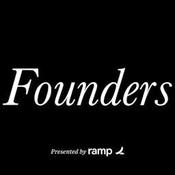657 episódios

The AI Productivity Gap with Keith Townsend
11/12/2025 | 41min
Corey Quinn reconnects with Keith Townsend, founder of The CTO Advisor, for a candid conversation about the massive gap between AI hype and enterprise reality. Keith shares why a biopharma company gave Microsoft Copilot a hard no, and why AI has genuinely 10x’d his personal productivity while Fortune 500 companies treat it like radioactive material. From building apps with Cursor to watching enterprises freeze in fear of being the next AI disaster in the news, Keith and Corey dig into why the tools transforming solo founders and small teams are dead on arrival in the enterprise, and what it'll actually take to bridge that gap.About Keith TownsendKeith Townsend is an enterprise technologist and founder of The Advisor Bench LLC, where he helps major IT vendors refine their go-to-market strategies through practitioner-driven insights from CIOs, CTOs, and enterprise architects. Known as “The CTO Advisor,” Keith blends deep expertise in IT infrastructure, AI, and cloud with a talent for translating complex technology into clear business strategy.With more than 20 years of experience, including roles as a systems engineer, enterprise architect, and PwC consultant, Keith has advised clients such as HPE, Google Cloud, Adobe, Intel, and AWS. His content series, 100 Days of AI and CloudEveryday.dev, provide practical, plainspoken guidance for IT leaders. A frequent speaker at VMware Explore, Interop, and Tech Field Day, Keith is a trusted voice on cloud and infrastructure transformation.Show Highlights(01:25) Life After the Futurum Group Acquisition(03:56) Building Apps You're Not Qualified to Build with Cursor(05:45)Creating an AI-Powered RSS Reader(09:01) Why AI is Great at Language But Not Intelligence(11:39) Are You Looking for Advice or Just Validation?(13:49) Why Startups Can Risk AI Disasters and AWS Can't(17:28) You Can't Outsource Responsibility(19:52) Business Users Are Scared of AI Too(23:00) LinkedIn's AI Writing Tool Misses the Point(26:42) Private AI is Starting to Look Appealing(29:00) Never Going Back to Pre-AI Development(34:27) AI for Jobs You'd Never Hire Someone to Do(39:09) Where to Find Keith and Closing ThoughtsLinksThe CTO Advisor: https://thectoadvisor.comSponsor: https://www.sumologic.com/solutions/dojo-aihttps://wiz.io/crying-out-cloud

AI Agents, Enterprise Risk, and the Future of Recovery: Rubrik’s Vision with Dev Rishi
04/12/2025 | 36min
In this episode of Screaming in the Cloud, Corey Quinn sits down with Rubrik’s GM of AI, Dev Rishi, to unpack the real story behind enterprise AI adoption, the rise of agentic systems, and why most organizations are still stuck in read-only mode. Dev breaks down how Rubrik’s Agent Rewind brings safety, observability, and resilience to AI-driven actions, solving the “Oh no, the agent deleted production data” problem before it happens. From deep learning’s evolution to the massive gap between consumer AI enthusiasm and enterprise risk posture, this conversation is a candid, insightful look at the AI future Global 2000 companies are racing toward… or cautiously tiptoeing into.Show Highlights(00:25) Understanding Rubrik and Agent Rewind(00:50) Challenges in AI and Disaster Recovery(01:27) Guest Introduction: Dev Rishi from Rubrik(01:44) The Evolution of AI in Enterprises(02:33) Starting an AI Company: The Backstory(05:10) Generative AI and Its Impact(07:15) Enterprise AI Trends and Challenges(08:56) The Future of Agentic AI(18:03) AI in Customer Support(22:03) Rubrik's Acquisition and AI Strategy(29:30) Launching Rubrik Agent Cloud(31:26) Lessons from Starting a Machine Learning Company(35:25) Conclusion and Contact InformationSponsor:Rubrik: https://www.rubrik.com/sitc

From Code to Cash: How André Arko Builds Better Tools and Gets Paid for Open Source
13/11/2025 | 40min
André Arko, CEO of Spinel Cooperative and longtime Bundler maintainer, joins Corey Quinn to introduce RV, a new Ruby tool that installs Ruby in one second instead of 10-40 minutes by using precompiled binaries. Inspired by Python's UV, RV aims to simplify Ruby dependency management without the complexity of older tools like RVM and rbenv. They talk about why Ruby isn't actually dead, Apple's problem with shipping a five-year-old end-of-life Ruby in macOS, and the challenges of writing dependency managers in the language they manage. André also shares how he transitioned from a struggling nonprofit model to a cooperative that charges companies for expertise, proving that open source maintainers can build sustainable businesses without relying on donations.Show Highlights:(03:50) Introducing RV(05:12) The RVM vs rbenv Wars and Why They All Break Bundler(09:00) Why Your Mac Still Shows Ruby 3.0.0 in Your Prompt(11:00) The Chef vs Puppet Philosophy Divide(16:30) Installing Ruby in One Second vs 40 Minutes(18:13) Apple’s Ancient System Ruby Problem(22:20) RV’s Incremental Approach (24:23) Is Ruby Dead? (28:44) Why RV Is Written in Rust, Not Ruby(31:10) The Bundler Problem(32:15) The Financial Reality(38:00) Spinel’s Plans to Make Money(39:23) How to Stay In Contact with AndréLinks:André Arko: https://arko.netBlue Sky: https://bsky.app/profile/indirect.ioSpinel Cooperative: https://spinel.coopSponsor: Rubrik: https://www.rubrik.com/sitc

Cyber Resilience Beyond Prevention with Anneka Gupta
30/10/2025 | 34min
When attackers are smart enough to hit your backups, recovery becomes your best defense. Rubrik’s Chief Product Officer, Anneka Gupta, joins host Corey Quinn to break down what true cyber resilience looks like in today’s multi-cloud world. From AI-driven recovery to surviving ransomware with your data (and reputation) intact, this episode covers what it really takes to bounce back when everything goes sideways.Show Highlights(00:00) Introduction to Ransomware and Backups(00:25) Welcome to Screaming in the Cloud(00:32) Introducing Rubrik and Annika Gupta(01:26) What Does Rubrik Do?(02:18) Evolution of Backup and Recovery(03:37) Challenges in Cyber Recovery(05:33) Rubrik's Approach to Cyber Resilience(08:44) Importance of Cyber Recovery Simulations(09:40) Security vs. Operational Recovery(11:28) Assume Breach: A New Security Paradigm(14:29) Multi-Cloud Complexities and Security(27:45) Hybrid Cloud and Cyber Resilience(29:25) AI in Cyber Resilience(33:09) Conclusion and Contact InformationAbout Anneka GuptaAnneka Gupta is a senior executive leader with a proven track record of scaling successful B2B SaaS businesses from the ground up. She’s led across product, tech, go-to-market, and operations, always with a customer-first mindset. Known for turning complex challenges into big wins, Anneka brings energy, innovation, and real-world results to every team she leads.She’s been recognized as one of San Francisco Business Times’ Most Influential Women in Business and 40 Under 40, as well as a Rising Star by AdExchanger and Marketing EDGE. Oh, and AdAge once named her one of the Top 10 Digital Marketing Innovators.Linksrubrik.com/sitchttps://www.linkedin.com/in/annekagupta/Sponsor: Rubrik: https://www.rubrik.com/sitc

Cloud Repatriation: Because Conspiracy Theories Are Cheaper with Deana Solis
16/10/2025 | 40min
Deana Solis, 2022 FinOps Foundation Evangelist of the Year, joins Corey Quinn to discuss her winding career path from electrical engineering to healthcare IT to FinOps. She shares why certifications are "largely performative," warns that AI can turn your AWS bill into "a telephone number," and explains why NAT Gateway costs hit everyone from hobbyists to enterprises. The episode covers cloud repatriation conspiracy theories, translating between engineering and finance teams, and why good FinOps work is really just getting humans in a room to talk.Show Highlights: (02:36) FinOps Foundation (03:15) FinOps as Marriage Counseling Between Engineering and Finance(06:00) Deana’s Journey From Electrical Engineering to FinOps(12:41) The Performative Nature of Certifications(16:22) AI as Both a Threat and Tool in FinOps(20:41) Why AI Is Flooding the Job Market with Noise(25:09) Why FinOps Is Never Boring Despite Sounding Like It(29:10) The NAT Gateway Problem(33:09) The Generational Divide in Cloud Platform Preferences(37:23) Stay In Contact With Deana SolisAbout Deana Solis: Deana Solis is a senior FinOps engineer with more than 20 years of infrastructure management experience. Recognized as the FinOps Evangelist of the Year by the FinOps Foundation in 2022, she has become a leading voice in driving cloud financial accountability and culture.Beyond her technical expertise, Deana is passionate about humanizing technology. She serves as a FinOps Foundation ambassador and mentor, using her voice to elevate Women in FinOps and underrepresented folks in technology.Her unique journey, from electrical engineering to liberal studies to FinOps, embodies both analytical rigor and emotional intelligence. Deana isn’t just shaping the way organizations think about cloud costs; she’s helping reshape the culture of technology itself.Sponsor: https://www.wiz.io/
Mais podcasts de Negócios
Podcasts em tendência em Negócios
Sobre Screaming in the Cloud
Ouça Screaming in the Cloud, ResumoCast | Livros para Empreendedores e muitos outros podcasts de todo o mundo com o aplicativo o radio.net

Obtenha o aplicativo gratuito radio.net
- Guardar rádios e podcasts favoritos
- Transmissão via Wi-Fi ou Bluetooth
- Carplay & Android Audo compatìvel
- E ainda mais funções
Obtenha o aplicativo gratuito radio.net
- Guardar rádios e podcasts favoritos
- Transmissão via Wi-Fi ou Bluetooth
- Carplay & Android Audo compatìvel
- E ainda mais funções


Screaming in the Cloud
baixe o aplicativo,
ouça.







































